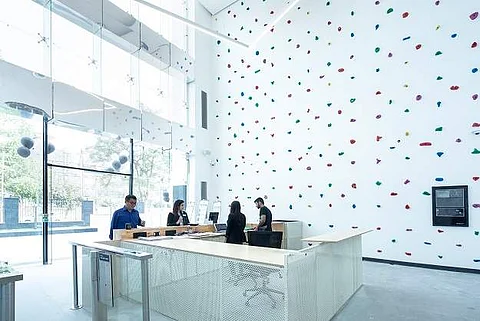

In the late 1960s, the novel field of environmental psychology explored the influence an individual's physical surroundings had on the way they think, feel and act.
Academic studies undertaken in this field emphasised the fact that the human mind is highly impressionistic, and our surroundings have an important role to play in how we perceive things.
Organisations today are looking to incorporate lessons from psychology, design studies and architecture to create workspaces that foster abstract thinking, creativity, collaboration and a sense of community.
It is widely known that individuals are able to perform at their absolute best when they are comfortable. Keeping this in mind, office spaces are increasingly being designed to promote a sense of belonging and ownership amongst employees.
This leads to a reduction in inhibitions and encourages employees to exchange ideas, forming synergistic alliances in the process.
The concept of a shared space allows employees to gather informally and share ideas in a casual manner. This practice helps bolster creativity, collaboration and is instrumental in boosting employee morale.
Furthermore, facilitating these interactions leads to a shared sense of purpose and community, an aspect that is often overlooked.
Co-working spaces emphasise a sense of community among its members and this is reflected in the way they are designed, which is one of the main reasons why they are considered conducive environments that inspire employees.

According to an article published in the Harvard Business Review, the community aspect of co-working spaces has led to employees finding their work more meaningful which is the result of an assimilated office culture that encourages collaboration.
The research also suggests that a well-designed work environment in a co-working space coupled with a well-curated work experience leads to employees thriving in these environments.
In terms of design principles, studies conducted in various disciplines expose the connections between light, colour, architectural space and the effect it has on creativity and early stage ideation.
These principles take into consideration factors such as office lighting, which has a bearing on how individuals feel in different environments.
Warm lighting, for example, helps put people at ease, sparking discussions and increased participation, which is helpful when used in common areas and discussion spaces.
In contrast to this, cool lighting is said to incite hyper-productivity, making it useful in certain environments such as brainstorm rooms.
Innovative spaces use such insights to create offices tailored to particular specifications, controlling the effects of the environment on the employee.

The creation of expansive spaces, through the use of glass and movable partitions, help bring in natural light and have the added symbolism of tearing down walls.
Employees working in these environments are considered on an average to get better quality rest and be more physically active and productive as compared to their counterparts working in rigid and boxed in enclosures.
Workspaces should be designed in such a way that they avoid the creation of physical silos. Employees must be encouraged to move around and work at different places in the office space, rather than be chained to their desks.
This change in environment is linked to the creation of a fluid rather than shackled perspective, allowing employees to better channelise the creative process. Organisations should also explore ways to bring nature into the workplace.

The incorporation of potted plants, rooftop gardens and other biophilic design principles help in putting employees at ease in high-stress situations, something that is imperative to ensure employees can think and act clearly during turbulent times at work.
Colour of the workplace plays a significant role as well in boosting the morale of the workforce. It is beneficial in the long run to invest time and energy into deciding the colour scheme.
The colour palette used in the space has the power to create a visual experience that subconsciously affects the brain.
Warm colours like shades of red can arouse the enthusiasm and energy of the office, while cool colours like blue or green can create a sense of relaxation while boosting creativity and thinking.
Adding local elements to the workspace also helps in making employees feel more welcome and comfortable.

It can be done by placing art pieces created by local artists around the workplace or by adding local elements that blend in with the theme of the city.
Indians also thrive on a sense of community and togetherness, therefore, having a common area where employees can meet and share lunch would be instrumental in creating a positive environment.
Considering how an employees’ mental state stands in direct proportion to their perception of physical space, it is vital that the office spaces of today create suitable environments that have a positive effect on the productivity of employees.
Creating inclusive workplaces that enable the creation of a community and boost imagination would lead to happier, satisfied employees, a fact that would be reflected in the quality of work they produce.
This article was authored by Francois Gramoli, Creative Director, WeWork India. WeWork is a global platform for creators to provide collaborative spaces, community and services to help people make a life, not just a living.